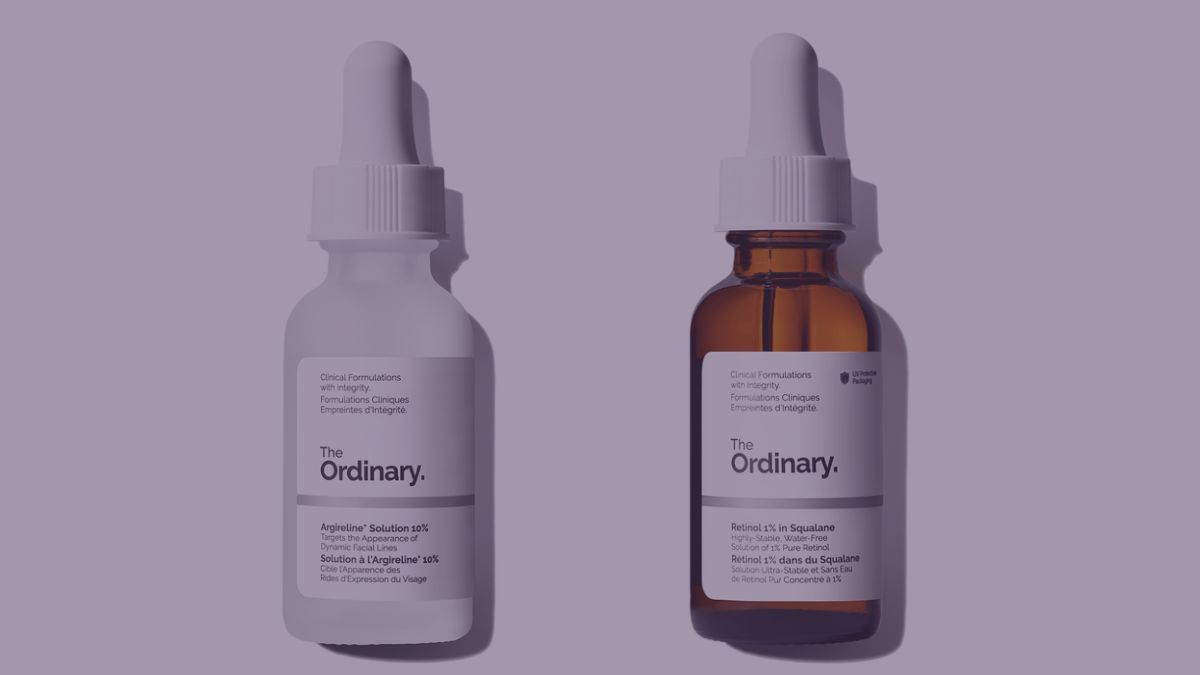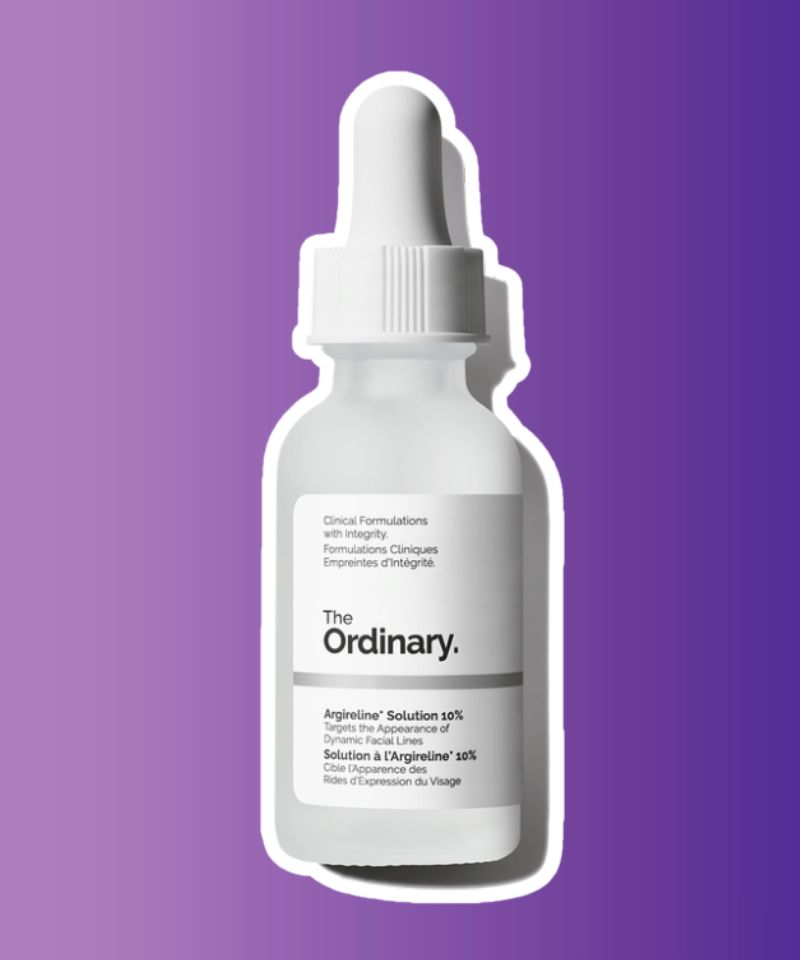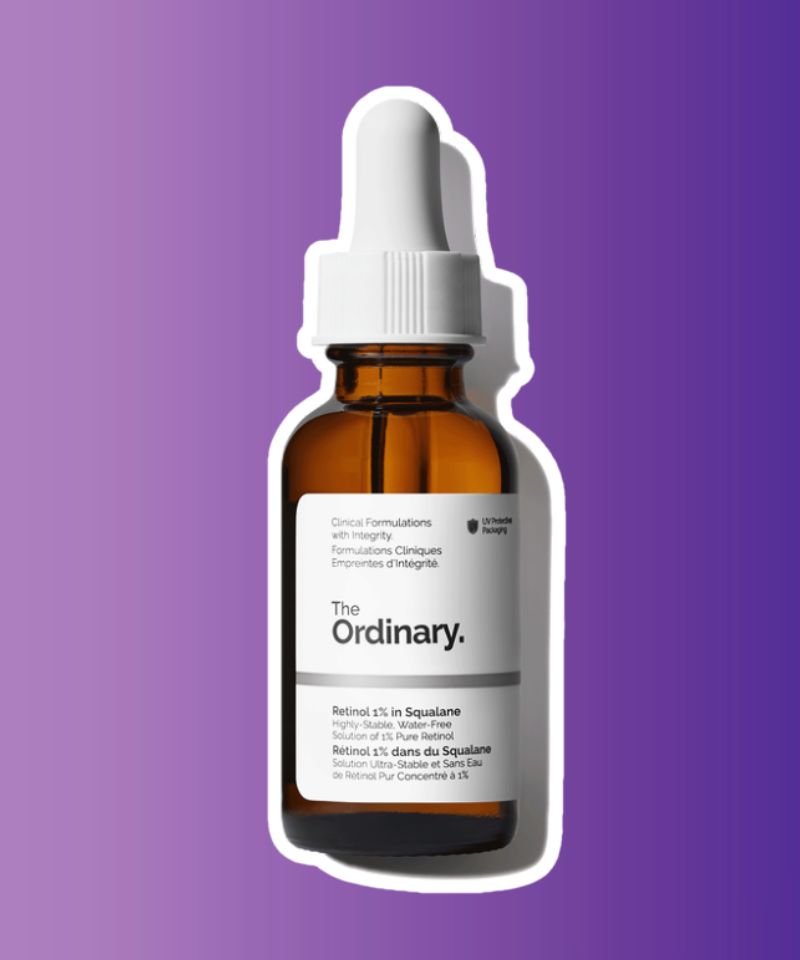Argireline and retinol can work together to reduce the appearance of wrinkles and fine lines and complement each other’s actions in improving skin tone and appearance.
Therefore, in this article, we will discuss the benefits of using both Argireline and retinol in your skincare routine, as well as some of the potential side effects that might occur and how to avoid them while using these anti-aging ingredients.

What is Argireline?

Argireline, scientifically known as Acetyl Hexapeptide-8, is a peptide compound often referred to as “Botox in a jar” because it aims to mimic the effects of Botulinum toxin and smooth out fine lines and wrinkles.
Argireline works by inhibiting the neurotransmitters that trigger muscle contractions.
This action relaxes facial muscles, reducing the appearance of dynamic wrinkles from repetitive facial expressions.
Unlike Botox, which directly halts muscle contractions through injections, Argireline provides a non-invasive solution that can be applied topically through creams and serums.
While the primary benefit of Argireline is its potential to reduce the appearance of expression wrinkles, regular use can lead to smoother skin texture, improved skin elasticity, and refined pores.
What is Retinol?

Retinol is a vitamin A derivative that increases cellular turnover and boosts collagen production to improve skin texture and reduce the signs of aging.
It’s also a potent antioxidant that reverses skin damage caused by environmental factors such as UV rays and free radicals from polluted air and prevents future damage, which helps maintain the skin’s health and appearance.
Once applied to the skin, retinol binds to retinoid receptors located throughout the epidermal layers.
This binding stimulates various changes that have to do with the growth and differentiation of cells involved with pigmentation, collagen synthesis, and other skin functions.
Once retinol starts to “teach” these cells to behave differently, this will lead to visible skin changes, including smoother, brighter, and more youthful-looking skin.
Additionally, retinol also has a profound effect on acne-prone skin, as it helps unclog blocked pores and clear out the cellular debris responsible for inflammation and acne.
Can You Mix Argireline and Retinol?
Yes, Argireline and retinol can be used together to target different aspects of skin aging and complement each other’s actions for better results.
For example, while Argireline relaxes facial muscles to reduce the appearance of fine lines and wrinkles, retinol promotes cellular turnover and boosts collagen production to improve skin texture and reduce the appearance of more prominent wrinkles.
On the other hand, while research on the direct interaction between Argireline and retinol is limited, some studies suggest that both ingredients can coexist in a skincare regimen without compromising their integrity or effectiveness.
Therefore, as long as your skin tolerates both ingredients, you can mix Argireline with retinol to address multiple skin aging concerns simultaneously and boost your skin’s health and appearance.
The Benefits of Mixing Argireline and Retinol
The benefits of mixing Argireline and retinol are, surprisingly, quite a few, and include the following skin improvements:
Enhanced Anti-Aging Effects: Combining Argireline and retinol offers a dual approach to reducing the signs of aging, targeting dynamic wrinkles, and improving collagen production for a more youthful appearance.
Improved Skin Elasticity: Retinol’s ability to stimulate collagen production complements the muscle-relaxing effects of Argireline, leading to enhanced skin elasticity and firmness.
Refined Skin Texture: The combination of Argireline and retinol can help refine skin texture by promoting cellular turnover, smoothing out rough areas, and refining the appearance of enlarged pores.
Increased Skin Hydration: Argireline can also help maintain skin hydration levels, which when combined with the regenerative properties of retinol, results in plumper, more hydrated skin.
Antioxidant Protection: Retinol acts as a potent antioxidant, protecting the skin from environmental damage, which can be compounded by the regular use of Argireline, contributing to overall skin health.
Reduced Acne: Using Argireline and retinol together can help address both wrinkles and acne concerns, as retinol helps unclog pores and reduce inflammation associated with breakouts, while Argireline can help with hydration and strengthening the skin’s barrier.
The Side Effects of Mixing Argireline and Retinol
While Argireline is generally a well-tolerated ingredient, combining it with retinol can lead to some side effects, including:
- Peeling and Flaking: Due to the accelerated cellular turnover caused by retinol, some users may experience peeling or flakiness.
- Dryness: Similarly, the increased cellular turnover can lead to initial dryness until the younger cells on the skin’s surface increase their moisture-holding capacity.
- Sensitivity and Irritation: Retinol can increase sensitivity and irritation, especially when used in high concentrations or combined with other active ingredients like Argireline.
- Allergic Reactions: Although rare, some users might experience allergic reactions to either ingredient, characterized by itchiness, swelling, or severe skin irritation.
- Purging: The skin may require time to adjust to the combination of Argireline and retinol, during which minor breakouts or changes in skin texture, known as purging, can occur.
How to Safely Mix Argireline and Retinol?

To safely incorporate both Argireline and Retinol into your skincare routine, consider the following tips:
Start Slow
When introducing both Argireline and retinol into your skincare routine, it’s crucial to start slow and with the ingredient that’s less likely to cause irritation.
For example, if your skin is more sensitive, start with a lower concentration of Argireline and gradually introduce retinol up to 2-3 times a week to avoid overwhelming your skin.
Once your skin starts tolerating both actives better, you can consider increasing the frequency or concentration of either ingredient.
Use at Night
Applying Argireline and retinol at night allows them to work their magic while the skin is in its repair and regeneration mode, which maximizes their effectiveness.
Additionally, this practice also reduces the risk of sun sensitivity and product degradation, as retinol can make the skin more prone to sun damage and can also be destabilized by exposure to sunlight, which will make it less effective.
Apply From Thin to Thick
When layering Argireline and retinol, always apply the thinnest consistency first and then build up to thicker formulas.
This approach ensures that each product penetrates the skin effectively without creating a barrier for other products.
Follow Up With a Nourishing Moisturizer
After applying retinol and Argireline, it’s important to lock in moisture to prevent dryness and peeling.
Opt for a rich, nourishing moisturizer that suits your skin type to help soothe and hydrate the skin, enhancing the benefits of both active ingredients.
Look for moisturizers containing ingredients such as ceramides, hyaluronic acid, and emollients to help replenish the skin’s moisture barrier and soothe any potential irritation.
Apply Sunscreen in the Morning
Sun protection is imperative when using retinol since this component can increase your skin’s sensitivity to the sun.
Each morning, apply a broad-spectrum sunscreen with an SPF of 30 or higher to protect against UV damage and prevent collagen breakdown, ensuring the longevity of retinol and Argireline’s anti-aging effects.
Listen to Your Skin
Lastly, it’s important to listen to your skin and make adjustments as needed.
If you experience any discomfort or adverse reactions, reduce the frequency of use or discontinue one or both products until your skin calms down.
Once your skin has recovered, you can gradually reintroduce the products one at a time into your routine.
Always start with the least likely to irritate your skin, which, in this case, would be Argireline, and slowly build up to using both ingredients together.
Frequently Asked Questions
Can Everyone Use Argireline and Retinol Together?
Most people can safely use both Argireline and retinol together, but those with very sensitive skin should proceed with caution when it comes to mixing active ingredients.
How Quickly Can I Expect to See Results?
Results from Argireline and retinol may vary; however, depending on your skin type, skin concern, and skincare routine, you should expect to see improvements in your skin’s appearance within 6-8 weeks of regular use.
What Comes First: Retinol or Argireline?
When layering skincare products, it’s generally recommended to apply the thinnest consistency first and then build up to thicker formulas.
Therefore, if you are using Argireline in the form of a lightweight, watery serum, you should apply it before retinol.

My name is Simone and I am a certified skin specialist. I created this website to teach my readers how to take great care of their skin and I also like to occasionally share my honest opinions on skincare products I’ve tried. You can learn more about me here.
